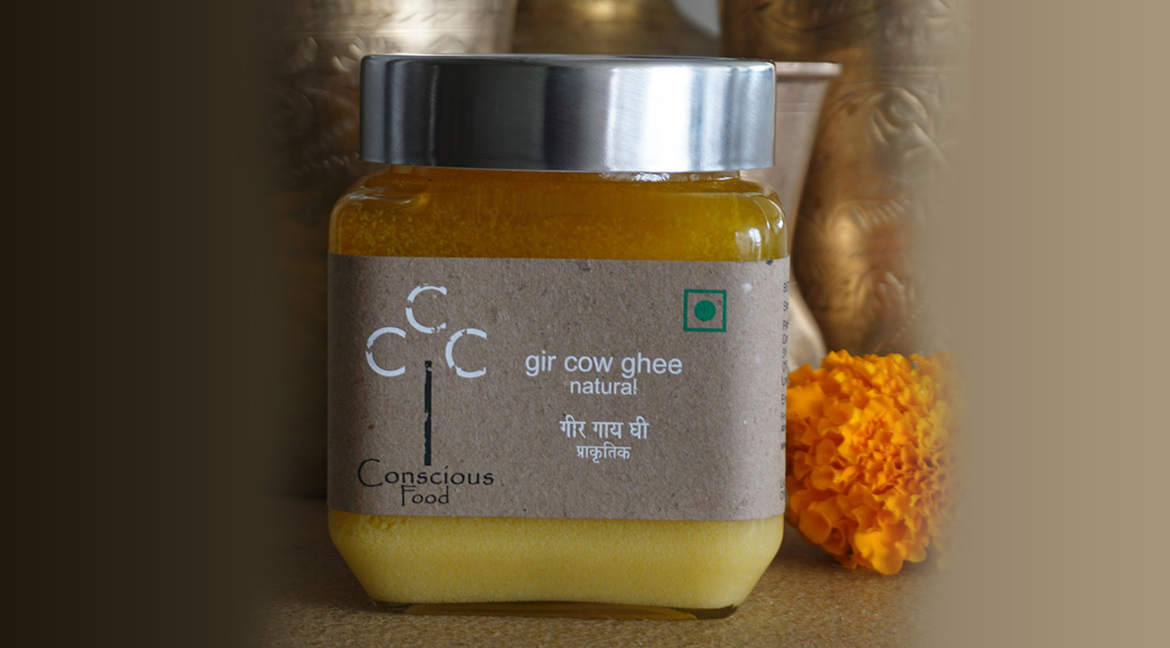Ghee for starters is good saturated fat for the body, according to Ayurvedic tradition; it enhances ‘Ojas’ (Sanskrit word for vigor), an essence that governs the tissues in the body and balances hormones. Ghee contains butyrate, which promotes healthy gut bacteria. It has been known to fight inflammation, have positive effects on insulin sensitivity and intestinal permeability, maintain the gut barrier integrity, increase water absorption in the gut and hence prevent leaky gut syndrome. It is free of lactose and casein, and is packed with vitamins and minerals. Most of all it makes for great cooking, due to its high smoke point.
A1 or A2 ghee?
A1 Vs A2 ghee or is there more?
A1 ghee comes from A1 quality milk, from the Holstein cow breed and contains a compound called BCM7 the leading cause for many health ailments (opioid and narcotic effects), including cancer.
A2 ghee comes from an older cow breed that has not been manipulated (by this I mean bred differently – mutated). The claim here is that the casein is better in terms of quality and absorbability (no beta-casein as A1 does).
The difference between the two is in 1 amino acid chain and the presence of BCM7.
What are the three things to keep in mind when buying your ghee? Is there a better option – Yes ‘Gir Cow Ghee’ for one its of A2 quality and has more benefits. The Gir cow is a native breed of the 37 breeds that India has. Its distinguishing feature is the hump that it has; there are 3 important aspects determine the quality of your ghee –
1. Know your cow: Holstein, Jersey or a genetically mutated bred cow (very difficult proposition, I know)
2. What is the raw material used to make the ghee i.e., is it A2 milk? Plus what are the cows being fed? Is it grass or grain? (This makes a difference to the quality of fat in the ghee; grass fed better and altering fodder with the seasons when feeding cows is essential).
3. What is the process used to make the ghee-is it just cream being separated from raw milk to make ghee? Which is not the best way to make it. Or is there churning and fermentation for probiotics involved; which should be used method for better quality.
A2 ghee and Gir cow ghee is available – so what about quality? Nutritional quality of what is being fed to cows, must be questioned? Commercially manufacturing of ghee is based on fat percentage; the more the fat in the milk the better the quantum/quality of ghee; but is it good quality fat? If cows are fed more grass, the yield of ghee will reduce. This is not good for marketers wanting more yield. However, the quality of fat from grass-fed cows is the best. Why grass? A cow that’s not genetically mutated, is local and fed grass converts the green fodder into CLA (conjugated linoleic acid) known to lower cholesterol, high BP, reduce inflammation, cancer fighter and lowers body fat; and even ALA (alpha linoleic acid) an essential omega 3 fatty acid.
Another reason why grass-fed cows produce better quality milk for ghee, is because a cow’s stomach ferments vitamin K1 (found in leafy greens) into K2, which then shows up in dairy fat. K2 is important for bone and heart health. Vitamin K2 is found mainly in animal foods, some fermented foods and made by your gut bacteria as well.

